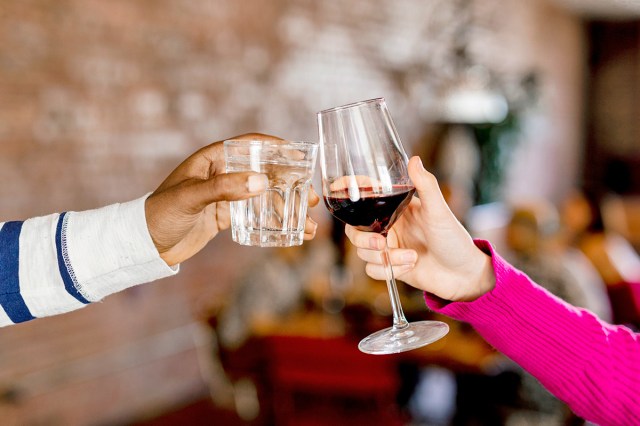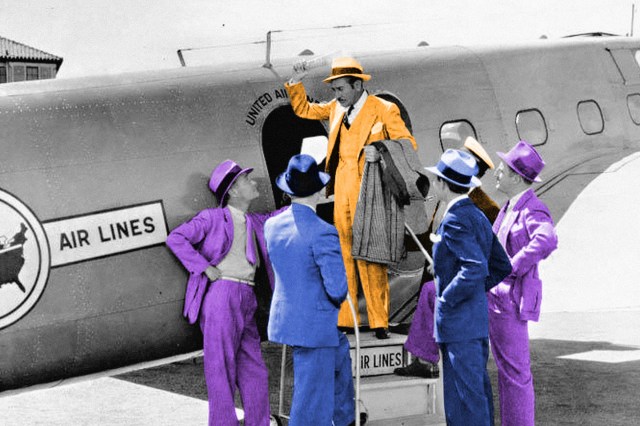
Waiting for a Formal Introduction
In centuries past, it was considered impolite to introduce yourself. Instead, it was proper to wait until a third party — a host, mutual acquaintance, or colleague — facilitated the introduction. This rule was closely followed in Victorian-era Britain, when introductions also adhered to strict social rankings. In social situations, people of a lower rank or social standing were introduced to their superiors, unless a woman was involved; a woman was always introduced to a gentleman, regardless of rank or social standing.
Formal introductions, however, have become a thing of the past thanks to modern communication’s reliance on speed and spontaneity. According to the experts at Debrett’s, London’s leading authority on modern manners, not only is it perfectly acceptable to introduce yourself to someone, but it’s often “the most practical solution.” It’s efficient, friendly, and spares everyone from awkward silence. Saying “hello” isn’t just acceptable nowadays; it’s expected.

Never Toasting With Water
Like many toasting faux pas, this rule is part old-fashioned etiquette, part superstition. Avoiding clinking glasses with only water (instead of alcohol) in your cup is prominent in maritime folklore, purported by sailors who feared that toasting with water would lead to drowning. But it’s no longer considered rude to toast with water. As The English Manner’s website explains, “Rules about not toasting with anything other than alcohol are nonsense.”
Indeed, modern etiquette experts say “cheers” to your sparkling water. Whether you’re abstaining from alcohol or simply prefer a soda, it’s completely acceptable to participate in a toast with whatever is in your hand. One toasting etiquette tip still stands: Always try to join in the toast, regardless of what you’re drinking. The spirit of the toast matters more than what’s in your glass.

Wearing Formal Attire on Airplanes
Passengers once dressed to the nines while flying commercial airlines. Three-piece suits, dresses, hats, and high heels were the norm. The first commercial flights took to the skies during the 1920s, and passengers were fashionably bundled up in their finest jackets and hats, which helped combat the chilliness of early jet planes.
Air travel continued to improve throughout the ’30s and ’40s, and passengers continued to don the latest fashion trends on their flights. The 1950s, known as the golden age of air travel, brought with it plane cabins akin to swanky dinner clubs, with prime rib, lobster, and top-shelf alcohol on the menu.
By the 1960s, flying became less glamorous, and passengers began to wear more casual clothing. Within a few decades, suits were a thing of the past unless you were flying on business. Today, travelers favor comfort over couture, a switch that may be due in part to cramped airline cabins, unpredictable flight delays, and more strenuous security measures. After all, sprawling airport terminals are no place for high heels.
More Interesting Reads

Flirting Discreetly
Throughout modern European history, flirting in public was frowned upon and considered a major violation of polite society etiquette. In the Victorian era, flirtation was highly coded and discreet to avoid breaking any rules. As a result, young single women had chaperones who followed them in public and who would shoo away any potential ill-mannered suitors.
To further mitigate any untoward behavior, “escort cards,” alternatively known as “acquaintance cards,” were used to initiate courtship without indiscretion. These cards featured brief messages such as “May I. C. U. Home Tonight?” that an interested gentleman would slip into a lady’s hand.
Today, the etiquette for expressing your interest in someone has drastically changed. Speaking to someone directly is usually the best course of action. It may even be considered rude or odd to hand them a business card-like note à la the Victorians. According to behavioral scientist and relationship coach Clarissa Silva in an interview with Verywell Mind, the hallmarks of respectful and successful modern-day flirting include eye contact, smiles, humor, genuine compliments, and active listening — no escort cards necessary.

Handshakes Determined by Gender Roles
Today, you probably stick out your hand for a friendly handshake without much thought. However, for centuries, strict guidelines governed who should initiate a handshake. Traditionally, gender played a role in this, and men were not expected to shake hands with women — rather, they waited for women to extend their hands first. But “ladies first” is a diminishing etiquette rule in many aspects today.
The Etiquette School of New York suggests that in modern business settings, everyone should be free to shake hands with anyone, unless someone is uncomfortable doing so. In Western business culture, the person with the highest perceived status (regardless of gender) — say, the CEO — should initiate the handshake first. But outside of business settings and in most social situations, inclusivity and mutual respect now lead the way, so don’t feel confined to gender norms.

Men Walking on a Woman’s Right Side
Speaking of archaic gender roles, in medieval Europe, it was once considered good etiquette for men to walk on a woman’s right side. According to Primer Magazine, this would allow a man’s right hand to be free to easily reach his sword (worn on the left) should a threat arise, while the left arm was used to escort the woman.
This tradition evolved during the 19th century as carriages became readily available to the public and were no longer a luxury reserved for the wealthy. With streets busier and more dangerous than ever before, men were expected to walk on the side nearest the street to protect their escorts from carriages, mud splashes, or any impromptu duels requiring a quick sword draw.
As for who walks on what side of the sidewalk today, it generally doesn’t matter. As for a man escorting a woman on the right side, this practice is still seen in formal wedding ceremonies, hearkening back again to the days when a man kept his sword hand free.

Bringing Your Own Napkin
The time-honored saying “do as the Romans do” doesn’t apply here — unless you want to get some peculiar looks at dinner parties. In ancient Rome, dinner guests would bring their own cloth napkins to wipe their hands and faces and package up any leftovers. These napkins were the earliest versions of “doggie bags,” and it was considered impolite (and impractical) to arrive at a dinner party without one.
While this “BYON” practice has vanished, the spirit lives on in the etiquette practice of bringing a gift to a dinner party. Etiquette experts at the Emily Post Institute say a gift for the host is always appropriate unless you’re close friends who dine together frequently. They suggest gifts such as wine, champagne, flowers, artisanal snacks, or housewares. A nice set of cloth napkins would be a charming nod to Roman tradition.












